 |  |
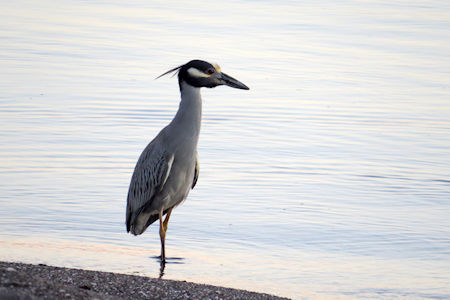
Baja is often experienced as a land of motion—the adrenaline rush of the Baja 1000, the power of a perfect wave at K38, or the hunt for the best roadside taco on a long drive down Highway 1. Many come to Baja for adventure, for escape, or for the vibrant pulse of life lived under a desert sun. But what if the peninsula’s greatest adventure wasn’t found in motion, but in stillness? What if the most profound connection to this place could be discovered by simply stopping, looking, and listening?
Welcome to the world of bird watching in Baja California, a pastime that transforms a familiar landscape into a land of endless discovery. It’s a way to connect with Baja’s wild heart and to understand its delicate ecology through the lives of its most ubiquitous and enchanting residents. To understand this world, I spoke with three people who have been captivated by it: Richard Erickson, a pioneering ornithologist who helped put Baja on the modern birding map; Nadine DeJong, a local resident whose passion was ignited by the birds outside her window; and Clair, a self proclaimed novice birder living in Valle de Guadalupe who discovered a new language in her own backyard during the quiet days of the pandemic. Their stories reveal different paths into a Baja that is deeper, quieter, and rich with feathered secrets.
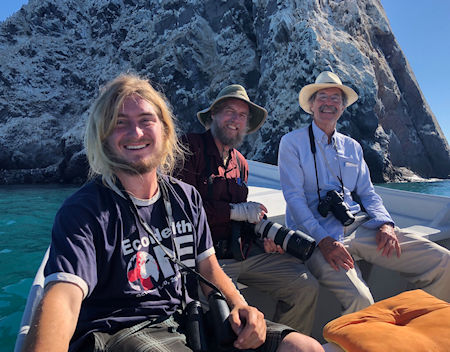
The Pioneer: Charting the Unseen Baja
Richard Erickson is, as he puts it, “an old guy now,” but when he speaks about birds, the youthful curiosity that has driven him since kindergarten shines through. A lifelong bird watcher in California, his gaze inevitably drifted south. “When I moved to Orange County in 1990,” he recalls, “at some point I started looking across the border and realized that across the border there are more birds.”
This realization set in motion decades of exploration. In the 1990s, Baja was largely uncharted territory for avid birders. “It was like a whole new world was suddenly available,” Erickson says, a hint of excitement still in his voice. He and his friends weren’t just looking for common species; they were hunting for rarities, for avian vagrants that had wandered far from their migratory paths. In 1992, friends of his discovered a species never before seen in Mexico. “We heard that,” Erickson says, “and we said, ‘that’s what we are going to do.’”
“We would take week-long trips,” he explains. “October is the great month. We are just looking for water.” They targeted isolated ranchos and desert oases that acted as magnets for migrating birds. This wasn't a leisurely pursuit. “It was a very active pursuit,” he stresses. “You are moving fast, going from spot to spot.”
This dedicated search paid off. Their work was formalized in 2000 when Erickson began co-writing a column on Baja birds, a project now in its 25th year. His most enduring legacy, however, may be the community he helped build. Recognizing the need for local involvement, he helped start the Ensenada Christmas Bird Count in 2000. “Initially, it was Californians going down doing this in Mexico,” he says. “Now, that count is run for and by Mexicans in Ensenada. It is quite rewarding to see the change.”
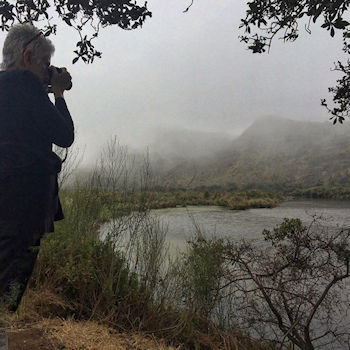
The Convert: Finding Yourself in a Flock of Wings
If Richard Erickson represents the adventurous, scientific pursuit of birding, Nadine DeJong embodies its deeply personal and spiritual side. “I have always known that I am happier outdoors than indoors,” she says. Her journey began with moments of pure, unexpected wonder: a flock of Cedar Waxwings descending on her backyard; tracking a rare bird through a forest until she was completely, happily lost.
When she moved to Baja and found herself living above an estuary, that curiosity took hold. “I wanted to know what the birds were,” she says. “I looked up bird watching in Baja. That is how I found Richard.” For Nadine, watching birds became a powerful spiritual practice. “They connect you to your true self,” she reflects. “It helps you appreciate being alive.”
This connection comes with a sharp awareness of change. Nadine is an unintentional archivist of the estuary’s health. “If you look at my photos from 2013 to now, it is unbelievable how different it is,” she says sadly, noting the dramatic decline in certain duck and coot populations. Yet the magic remains. The key, she has learned, is patience. “You can’t just say, ‘I’m going to see the birds and go home.’ You have to wait.”
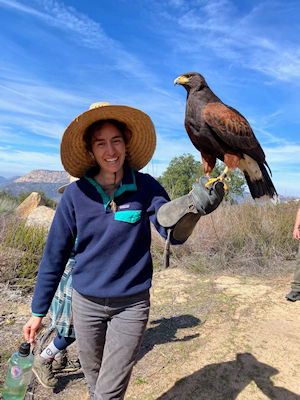
The Listener: Tuning into a Secret Language
Clair’s journey into birding offers yet another path, one born not of scientific pursuit or grand spiritual quests, but of simple presence. “I got into bird watching during the pandemic,” she explains. “I’ve always been into gardening and native plants, so I felt like I should know the birds. I’d never had the patience before, but now I had the time.”
For Clair, it’s not about expensive binoculars or life lists. It’s about listening. “A real bird watcher probably wouldn’t even consider me one,” she says with a laugh. Her entry point was the book What the Robin Knows, which taught her to recognize the difference between bird songs and alarms. “Birds are communicating to everybody,” she says. “An alarm call might alert you to a predator, like a hawk. If they are singing, it’s a sign that all is well.”
This new awareness has transformed her experience of the outdoors. “Just the other day, we were on a walk and I heard what was clearly an alarm call, and looked over and saw two birds swooping and chasing some kind of falcon. Before, I wouldn’t have paid any attention to that.” Her advice is simple and profound. “Find a spot and just sit there for twenty minutes. When you first walk through a space, the birds have already alerted everyone, ‘Hey, a human is coming—so everyone be quiet.’ But if you sit there, they start to come back in. Even if you don’t see any birds, you just spent 20 minutes in nature, silent and listening.”
Your Invitation to the Flock: How to Begin
Starting this journey has never been easier. Here’s how you can get started:
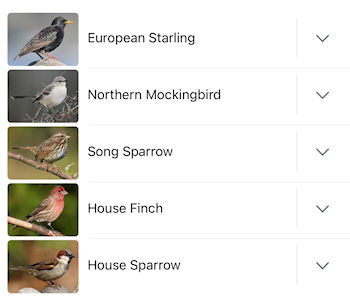
Birding in Baja offers a different kind of travel. It asks you to trade speed for stillness and noise for birdsong. It reveals that you are not just a visitor passing through, but as Nadine says, “You realize you are not separate. You are really part of it.” So next time you’re in Baja, find a quiet spot. Turn on your Merlin app, raise your binoculars, and just wait. You might be surprised by what you see, and even more by what you hear.
Banner photo by Erin Dunigan.